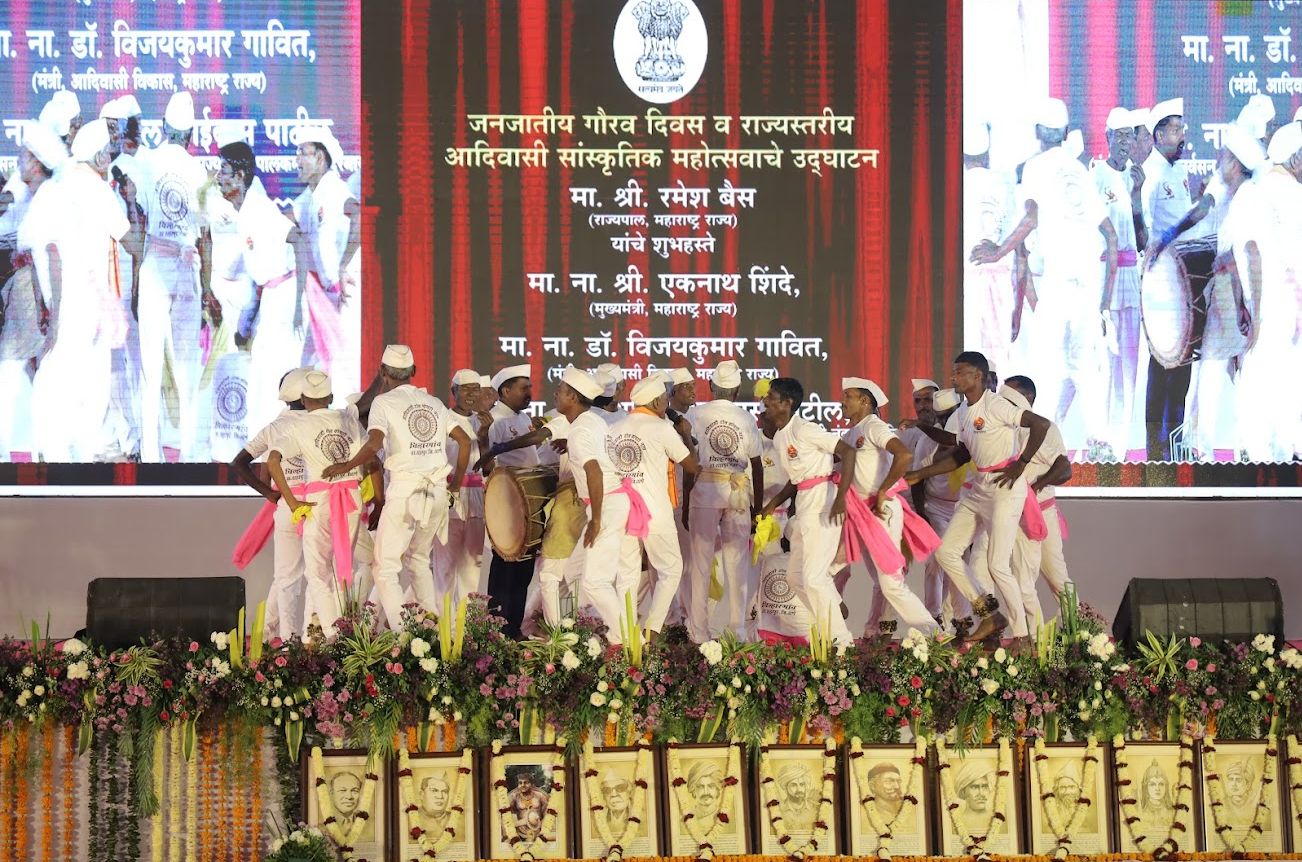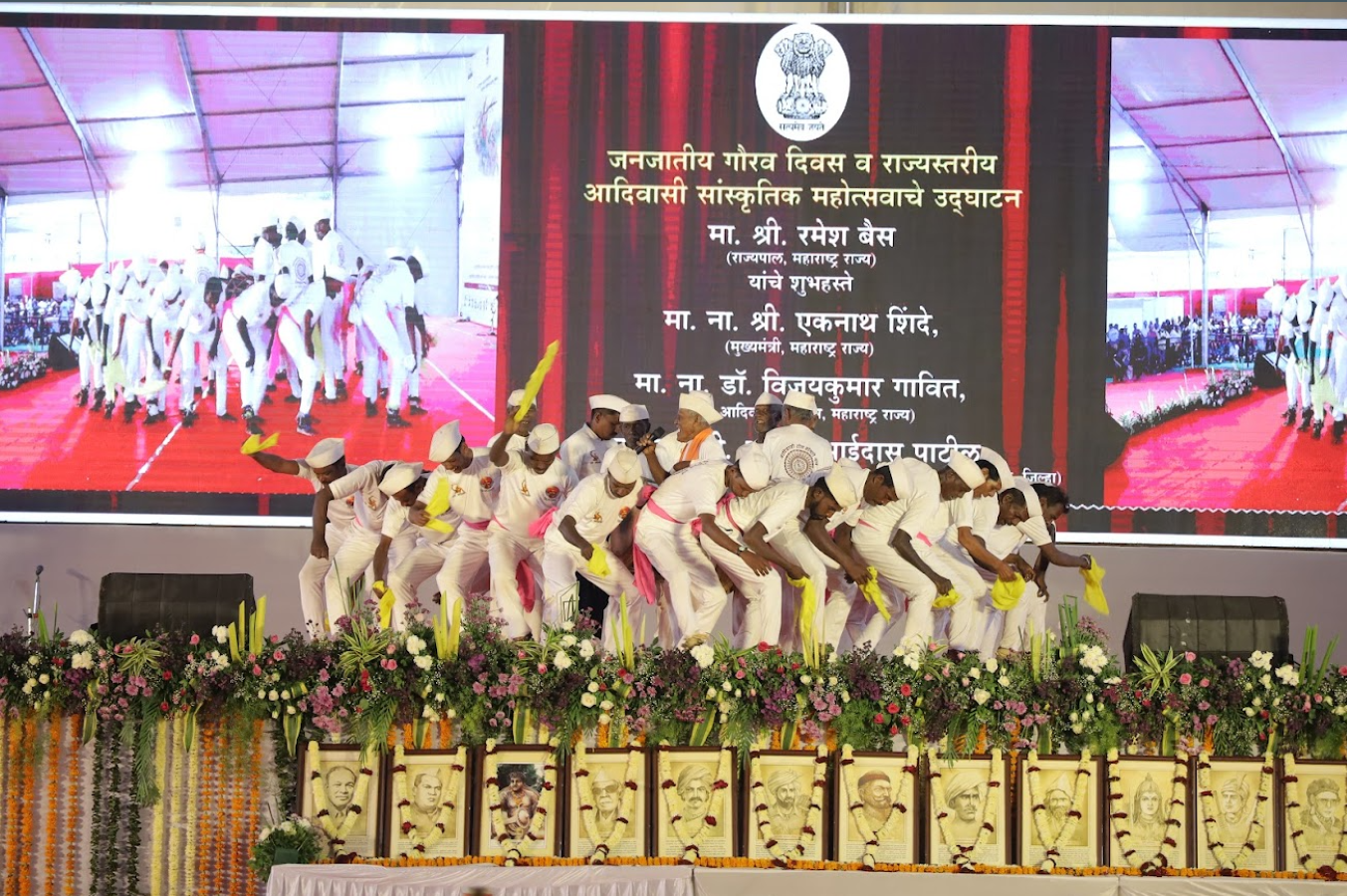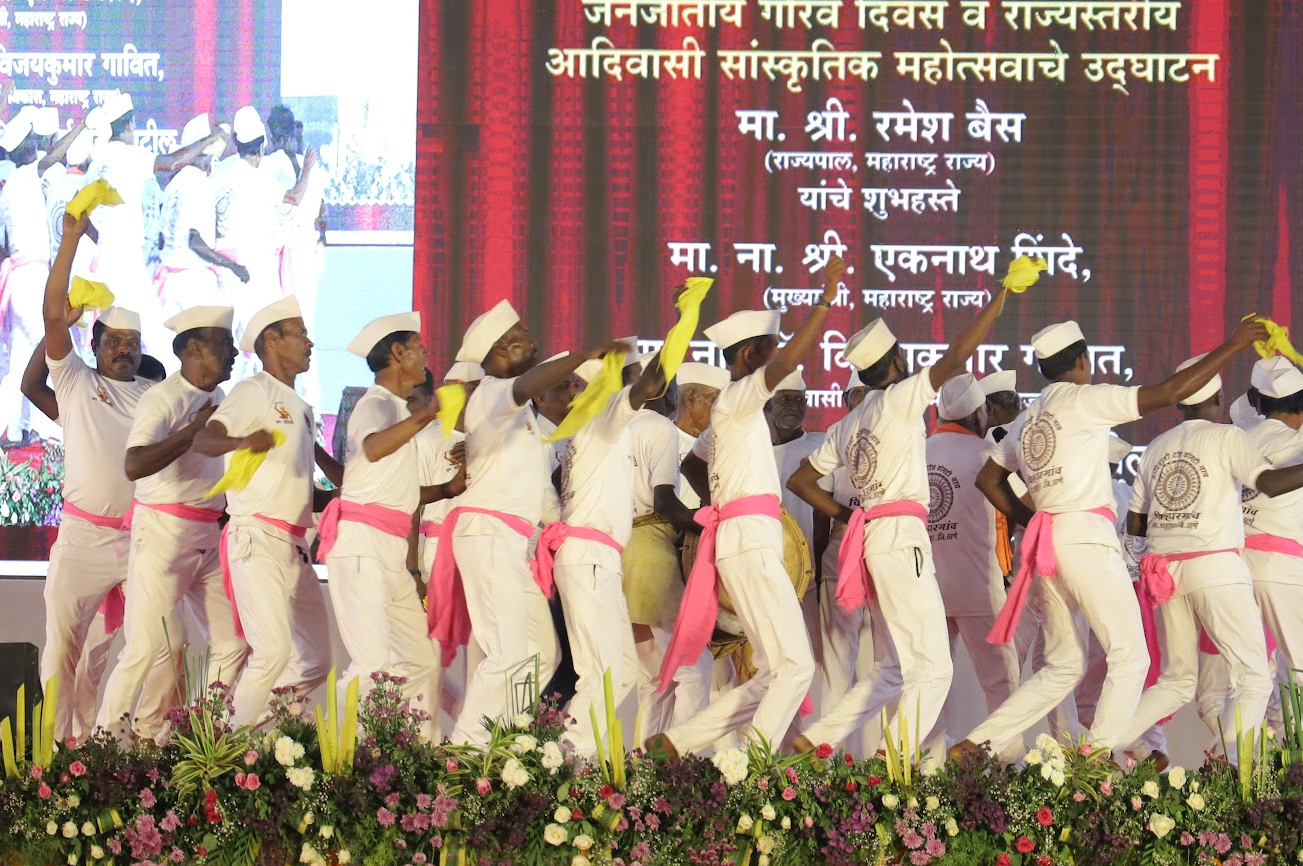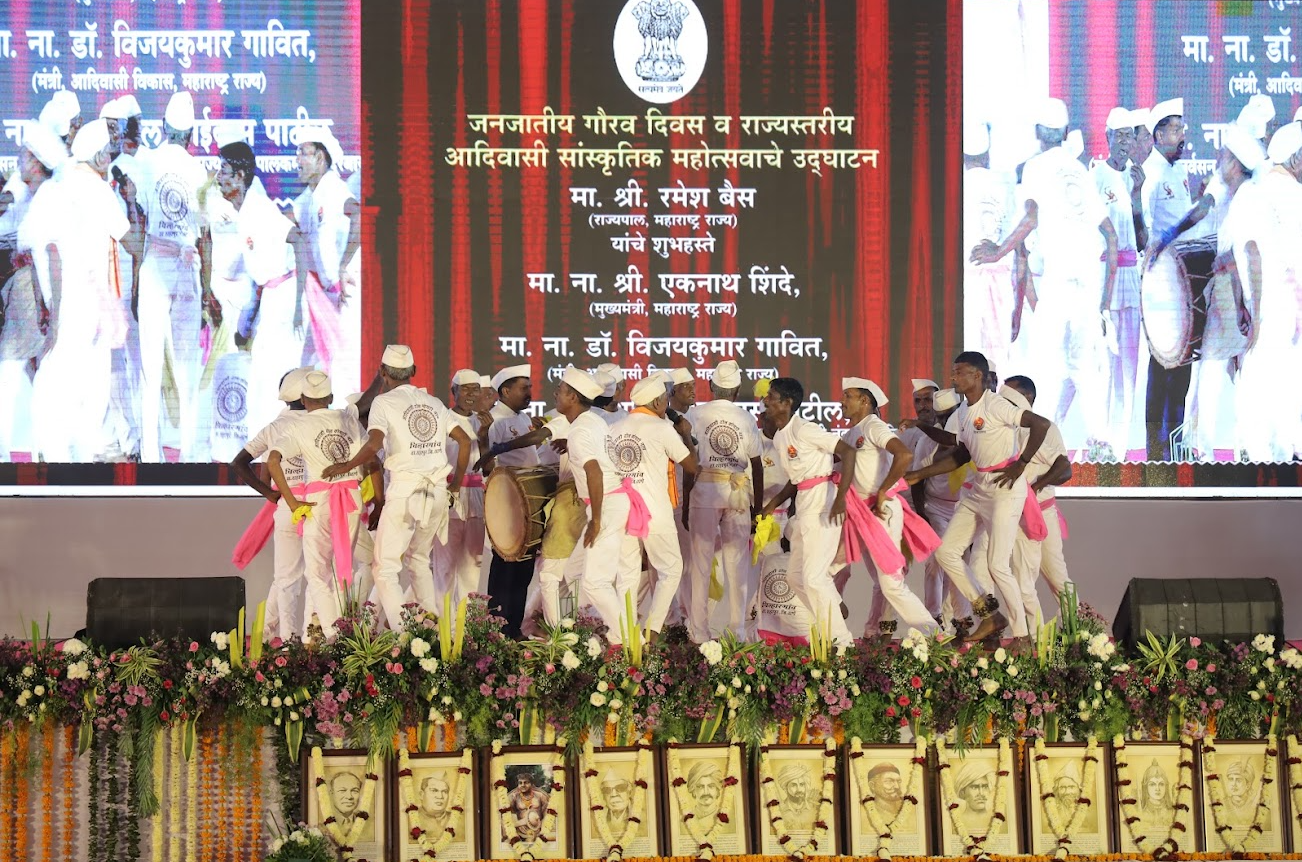
Themes
tribal dance
DHOL KAMBAD AND KAMDI DANCE, maharashtra

Thakar is a Scheduled Tribe in the state of Maharashtra. Community speaks Thakri, which is a dialect of Marathi. They are agriculturists, currently the Thakar people cultivate rice principally. They are also involved in forest collection and, previously, used to hunt wild animals. Living in the midst of Sahyadri Mountains, the Thakar obtain fuel, forest tubers and medicinal herbs from their surrounding forests. The villages of the Thakar are found all over the hill slops in Ahmednagar, Nasik, Pune and Thane districts.
The Thakars have a rich heritage of songs in praise of their gods; music and dance on wedding ceremonies, births and other festivities. Kambad has historically been a recreational dance; an antidote for the toil of a day's hard labor in the fields. It occurs at leisure and during all festivals. These dances are imitations of farming processes. Kambad dance is an interesting presentation of rhythm, nimbleness and zeal. Kambad's music is a tradition inherited from generation to generation. The Thakar society wishes that the tradition will be continued for generations to come.


Paddy is the staple crop and the Thakars look forward to the onset of monsoon. Sowing starts with the first rains and seedlings after the second week of June. at this time, Thakar people celebrate 'Saath'. It is a festival at village level, in which prayers are chanted to thank the village goddess, " Aai Pandhari " and other gods like Vaghoba, Mhasoba, Vetal, Maruti and Dongar-Kalsubai. Gifts are offered to them and from this moment Thakar men take part in the Kambad dance on all the village festivals. Presently, Kambad dance is regarded as a way of holding on to the traditions and culture of the people. The old and young people come together, sharing joys and woes, and dance this as their forebears did before them.
Their key musical accompaniment is a double drum called dhol which is made from teak wood and goat hide. The lyric of the song Kambad and the dhol form the focal point of the dance as well as for society where they treat the drum as a deity. In synch with one another, performing acrobats to the sound of music, singers prompt them, lyrics as well as songs tied in conjunction with the drums' rhythm alongside the ghugaroos, tied around every dancer's leg. Costume includes Ancient Dressing, Men don dhoti & body vest. Bind half turban on their head.


